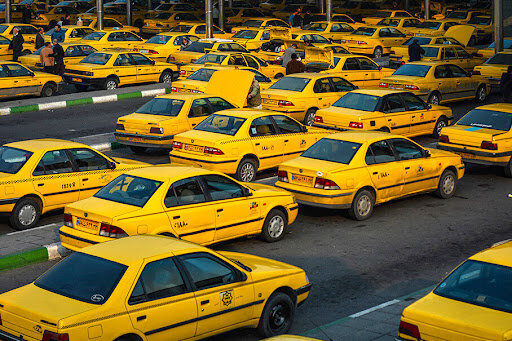Tehran taxi fleet to add 10,000 new vehicles

TEHRAN – About 10,000 new taxis will replace clunker ones in the Tehran transport fleet by the end of the current [Iranian calendar] year (March 20, 2022), Seyed Mojtaba Shafiei, deputy Tehran mayor for transportation and traffic, has said.
Under the taxi fleet modernization plan, about 2,700 taxis have been renovated so far, which will play an effective role in reducing air pollution in Tehran, he explained, IRIB reported on Saturday.
There are currently 150,000 clunker taxis in the country, which will reach up to 240,000 by the next 2 years, constituting 75 percent of the country’s total taxi fleet, Morteza Zameni, director-general of urban taxis union, said last year.
Referring to the renovation scheme of 90,000 clunker taxis over the past three years, he noted that some 186,000 taxis were extremely old, aged 10 or more, and required to be replaced with newer ones.
Some 4,000 to 5,000 Tehrani citizens die each year from direct exposure to particulate matter (PM) emissions. Air pollution incurs a financial loss of about 140 million rials (nearly $3,300) for each family in Iran annually, however, both high-priced vehicles and low-cost fuel are to blame for the air pollution severely haunting big cities of the country, said Behzad Ashjaei, secretary of the technical inspection committee of the Department of Environment.
According to the World Health Organization, seven million people die from air pollution every year, making it the greatest environmental threat to health today. Urban air pollution, in particular, is increasing by 8 percent every five years, and 95 percent of cities worldwide do not meet the World Health Organization’s guidelines.
According to statistics, some 4,000 to 5,000 Tehrani citizens die each year from direct exposure to particulate matter (PM) emissions, and air pollution brings Iran a loss of over $2.6 billion per year, or about $2,000 a day.
The Municipality of Tehran has prepared a comprehensive plan to mitigate air pollution in the metropolis, based on which a total budget of 174 trillion rials (nearly $4 billion) is required over the course of four years.
The plan focuses on reducing particulate matter and the concentration of PM 2.5, so it reduces primary PM sources and secondary precursors like nitrogen oxides (NOx) and volatile organic compounds (VOCs).
It was envisaged that primary PM sources will be reduced by 55 percent and secondary precursors by 45 percent.
The plan claims that the main reasons behind air pollution intensification in the capital are lack of clean and cheap public transport, overcrowded transport fleet, poor quality vehicles, extremely old public transportation fleet, and poor urban development policies.
FB/MG
